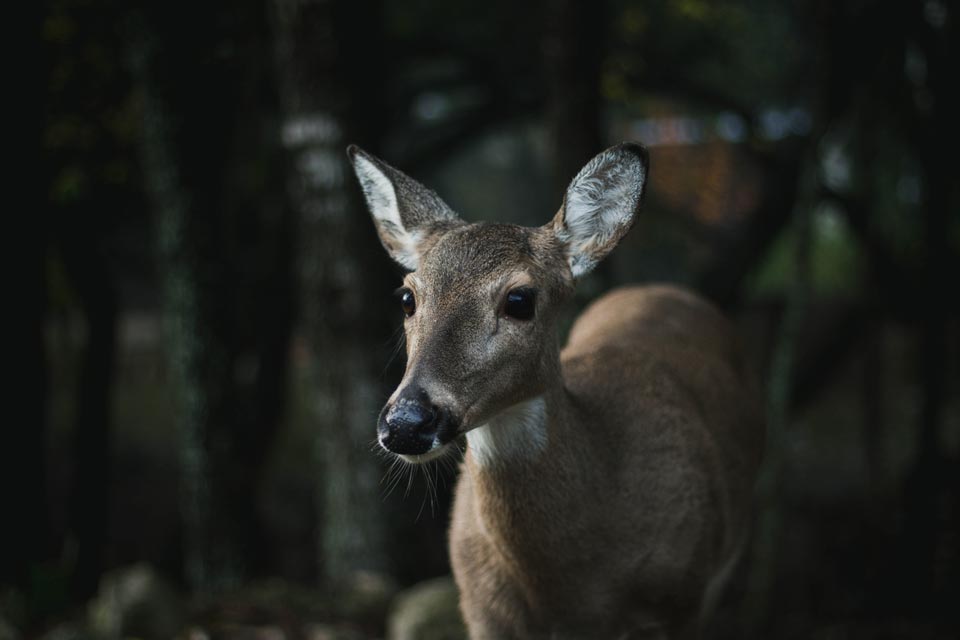In January, I put out a public service announcement about planting native. We got some great feedback from readers, especially those that were interested in how invasive species affect habitat quality for wildlife. So, per your request, here’s the second part to the planting native story!

Last summer I wrote a post on habitat quality, but I didn’t focus on invasives. Fortunately for this project, a majority of the plots we survey are in forest interiors with minimal levels of invasion. Most of the invasives we encounter occur near roadways or a non-forest patch, which isn’t an uncommon problem.
Why? Resource fluctuations and propagule pressure are thought to be two of the unifying themes promoting plant invasion. Let me explain: most invasives are “superior” competitors for resources because they’ve escaped their checks and balances back home.
The more resources fluctuate over time (think adding light to the forest via a new road) and the more seeds (propagules) flooding the area from increased traffic, the better opportunity invasives have to gain a foothold in the forest.
Fun Fact: Vehicles are great dispersers of seeds. I once carried a scarlet oak acorn nearly 400 miles under my windshield wiper from PA to OH. Oops.
So, what does this mean for habitat—especially deer habitat? Well, unfortunately not a lot of research has been done investigating the forage quality (chemistry) of invasive species in Pennsylvania. In fact, very little research has been done on assessing the nutrient content of any of the things deer don’t typically eat—like hay scented fern, bracken fern, teaberry, and mountain laurel (You can check out the nutrient content of things deer do eat). 
It’s not all bad news. One of the things we do know a lot about is deer preference, and preference also plays a big part in habitat quality. Kristine Averill (now a research associate at Cornell University) conducted a study at the Penn State deer pens from 2011-2012 evaluating deer feeding preference of several species of invasives for her PhD dissertation. She gave captive does a choice of vegetation (both native and not) and recorded video of them eating the vegetation.
Kristine found strong species preferences by deer. Native plants were consumed in higher quantities (biomass) than invasives, and deer consistently avoided invasives like garlic mustard (Alliaria petiolata), Japanese barberry (Berberis thunbergii), and Japanese stiltgrass (Microstegium vimineum). They also avoided hay-scented fern (Dennstaedtia punctilobula), a native plant.
They actually ate (and preferred!) some invasives like Oriental bittersweet (Celastrus orbiculatus), privet (Ligustrum vulgare), and honeysuckle (Lonicera morrowii). They also preferred red maple (Acer rubrum).
Kristine concluded that strong deer preference can help shape how invasives spread. Particularly, she focused on how deer can help spread invasives by NOT eating them.
While it may seem counter-intuitive, this is a common problem in plant ecology. A lack of herbivory (due to unfavorable plant metabolites, spines, or otherwise) gives these species a competitive advantage, making that species more likely to reproduce (higher “fitness”). The non-preferred species then becomes dominant, outcompeting preferred forage. In the end, this puts even more pressure on preferred species as their numbers dwindle, and eventually you end up with a low-quality forest understory dominated by things that deer don’t eat. Deer browsing of invasives actually helps keep them in check (despite some minimal risk of spreading seeds through their digestion).
The take home message is this: the effect of invasives on habitat quality depends on the level of invasion, the species present, and how those species interact with the other species around them. It’s complicated to predict how habitat will respond to invasion, but the single most important thing we can do to protect our forest is to plant native from the start. Habitat restoration is difficult, expensive, and sometimes close to impossible. It’s much easier to maintain high quality habitat than it is to create it. Do yourself (and the forest) a favor—PLANT NATIVE!
Ph.D. graduate student
If you would like to receive email alerts of new blog posts, subscribe here.
And Follow us on Twitter @WTDresearch
